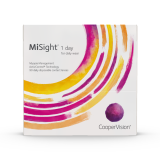
This this first part of a 3-part series, we examine current fitting practices for low astigmats, both globally and in the US market.
INTRODUCTION
It has been established that modern soft toric contact lenses are as quick and simple to fit as spherical lenses,1 with good visual outcomes and rotational stability across many visual tasks.2-7 However, when 400 eye care professionals (ECPs) in the US were asked, only around half agreed soft torics are as easy to fit as the equivalent spherical lens (49%), and that they have excellent rotational recovery (55%).8 How does this disparity between reported product performance and practitioner attitude influence fitting practices? Ultimately, what is the impact on patients, and how close does current practice come to meeting their expectations?
HOW MANY PATIENTS HAVE ASTIGMATISM?
To evaluate how proactive ECPs are with fitting soft toric lenses both the prevalence of astigmatism and the proportion of soft torics fit need to be known. A number of factors influence the estimated prevalence of astigmatism. For the purposes of soft toric fitting a more useful threshold to use is 0.75D, the amount of astigmatism ECPs typically consider as the lowest amount that would need correcting with a soft toric design.9 The use of data from only one eye compared to both eyes changes prevalence estimates, and given that astigmatism becomes more common with age,10,11 the range of ages included in the dataset has an influence too. Prevalence also varies depending on the study population, with regional differences reported in a recent meta-analysis ranging from 11.4% (95% CI: 2.1–20.7) in Africa to 45.6% (95% CI: 44.1–47.1) in the Americas,12 and 44.8% (95% CI: 36.6‑‑53.1) in South-East Asia.13
Keeping all these considerations in mind, the global prevalence of astigmatism of at least 0.75DC (described as >0.50DC) is 40% (95% CI: 34–47) among those aged over 30 years.13 Assuming the contact lens wearing population are representative of the larger visually corrected population, if ECPs were routinely recommending toric lenses to all astigmats of at least 0.75DC, it would be expected that use of soft torics would represent a similar proportion of soft lens fits. So how do fitting practices compare?
CURRENT SOFT TORIC FITTING PRACTICE
While the prevalence of astigmatism has not changed significantly during the last three decades,13 soft toric lens design and availability certainly has. Given the wide choice of materials, replacement schedules, prescription options and toric lens designs, the ECP has many options from which to choose. So how close are toric fitting practices to representing 40% of fits?
Data from the most recent international contact lens prescribing report show soft toric lenses represented 27% of all soft lens fits reported (average of 24 countries reporting more than 100 fits).14 Within the category of “soft fits”, the largest proportion came from spherical (51%) and toric lenses respectively (27%), with smaller contributions from the categories of multifocal, monovision, cosmetic and myopia control fits.14
These numbers would appear to indicate that we have a significant opportunity to fit more patients in their full astigmatic correction. So where should we be looking to capitalize on that opportunity?
Click here for Part 2 in this series: Confident Proactive Toric lens fitting
References:
1. Cox SM, Berntsen DA, Bickle KM, et al. Efficacy of Toric Contact Lenses in Fitting and Patient-Reported Outcomes in Contact Lens Wearers. Eye & contact lens 2018;44 Suppl 1:S296-S9.
2. Young G, McIlraith R, Hunt C. Clinical evaluation of factors affecting soft toric lens orientation. Optometry and vision science 2009;86:E1259-66.
3. McIlraith R, Young G, Hunt C. Toric lens orientation and visual acuity in non-standard conditions. Contact lens & anterior eye 2010;33:23-6; quiz 43-4.
4. Momeni-Moghaddam H, Naroo SA, Askarizadeh F, et al. Comparison of fitting stability of the different soft toric contact lenses. Contact Lens and Anterior Eye 2014;37:346-50.
5. Edrington TB. A literature review: the impact of rotational stabilization methods on toric soft contact lens performance. Contact lens & anterior eye 2011;34:104-10.
6. Zikos GA, Kang SS, Ciuffreda KJ, et al. Rotational stability of toric soft contact lenses during natural viewing conditions. Optometry and vision science 2007;84:1039-45.
7. Chamberlain P, Morgan PB, Moody KJ, et al. Fluctuation in visual acuity during soft toric contact lens wear. Optometry and vision science 2011;88:E534-8.
8. CVI data on file 2020. Kubic online survey; n=404 US ECPs who prescribe toric soft CLs.
9. Young G, Sulley A, Hunt C. Prevalence of astigmatism in relation to soft contact lens fitting. Eye & contact lens 2011;37:20-5.
10. Sawada A, Tomidokoro A, Araie M, et al. Refractive errors in an elderly Japanese population: the Tajimi study. Ophthalmology 2008;115:363-70 e3.
11. Gudmundsdottir E, Jonasson F, Jonsson V, et al. "With the rule" astigmatism is not the rule in the elderly. Reykjavik Eye Study: a population based study of refraction and visual acuity in citizens of Reykjavik 50 years and older. Iceland-Japan Co-Working Study Groups. Acta ophthalmologica Scandinavica 2000;78:642-6.
12. Varma R, Torres M, McKean-Cowdin R, et al. Prevalence and Risk Factors for Refractive Error in Adult Chinese Americans: The Chinese American Eye Study. American journal of ophthalmology 2017;175:201-12.
13. Hashemi H, Fotouhi A, Yekta A, et al. Global and regional estimates of prevalence of refractive errors: Systematic review and meta-analysis. J Curr Ophthalmol 2018;30:3-22.
14. Morgan P, Woods C, Tranoudis IG, et al. International Contact Lens Prescribing in 2020. Contact Lens Spectrum 2021:32-8.





